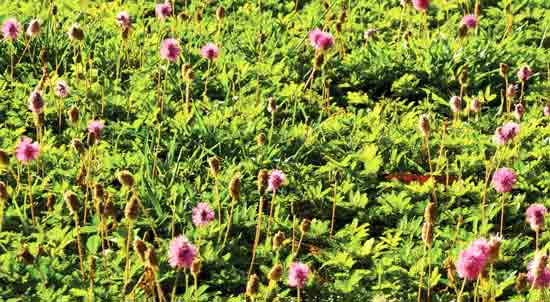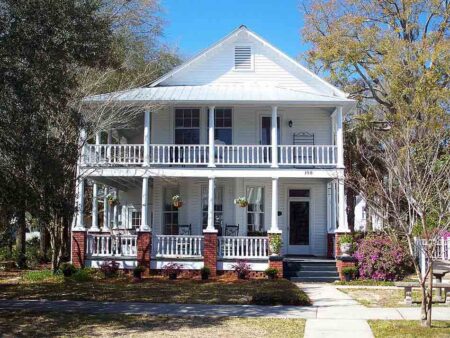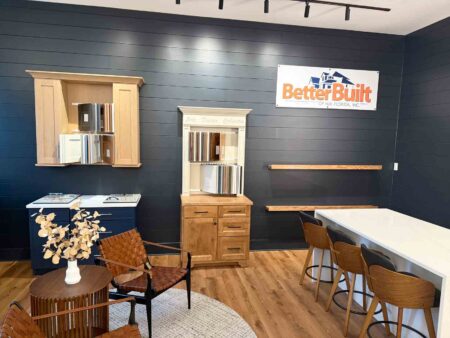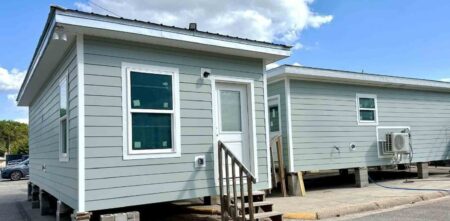FLORIDA—Sometimes lawn grass declines. Maybe you picked the wrong lawn grass for the site. Maybe you are incorrectly managing the lawn grass that you have. Maybe trees are winning the battle with the lawn. Maybe the lawn is old and in need of a total redo.
Lawn grass should be used where it serves a purpose and where it will grow. In areas where lawn grass will not grow, perhaps an alternative should be considered.
Here are a few lawn grass alternatives to consider.

Powderpuff Mimosa (Mimosa strigillosa) – This native groundcover can be used in open sunny areas. It produces one-inch globe-shaped pink flowers from spring through fall. It is deciduous. It covers an area quickly with its long above-ground stems. These stems can grow into surrounding areas requiring some edging. Here is a link to a UF/IFAS Extension publication with more information: https://tinyurl.com/PP-mimosa.
Perennial peanut (Arachis glabrata, Benth) – This nonnative groundcover is best used in open sunny areas. It spreads aggressively from underground rhizomes. Once established, it needs little care. It produces bright yellow flowers in spring through fall. It becomes brown and dormant with the first killing frost but regrows in spring. It makes a dense cover that can be mowed. Here is a link to a UF/IFAS Extension publication with more information: https://tinyurl.com/Perennial-peanut.
Mondo Grass (Ophiopogon japonicus) – Even though this nonnative groundcover will handle some sun, it is best used in shady areas or the landscape, growing even in heavy shade. It can be a good alternative under trees where traditional lawn grass will not grow and where it may be difficult to mow because of tree roots. It remains low to the ground, growing only six to eight inches tall. Even though it is not a true grass, it looks grass-like. It remains dark green year-round with few pests and is drought tolerant. It does not have to be mowed but does well with mowing when mowed high. It can handle some foot traffic. It will slowly move into surrounding areas where it was not planted. Here is a link to a UF/IFAS Extension publication with more information: https://hort.ifas.ufl.edu/shrubs/OPHJAPA.PDF.
Most turfgrass alternatives have problems of their own, including cost of establishment, lack of availability, lack of products to control weeds, most are not as tolerant to foot traffic as compared to traditional lawn grasses and unknown or nontraditional maintenance practices.
Also, keep in mind whether traditional lawn grass or alternative, nature insists on diversity and will attempt to regain that diversity with time. So, be ready to do battle with nature, a continual and perhaps lifelong battle when attempting to grow nothing but the same plant in an area (monoculture).
Larry Williams is the Extension Horticulture Agent with the Okaloosa County Cooperative Extension Service, University of Florida. You can contact Larry at 689-5850 or email lwilliams@myokaloosa.com.






